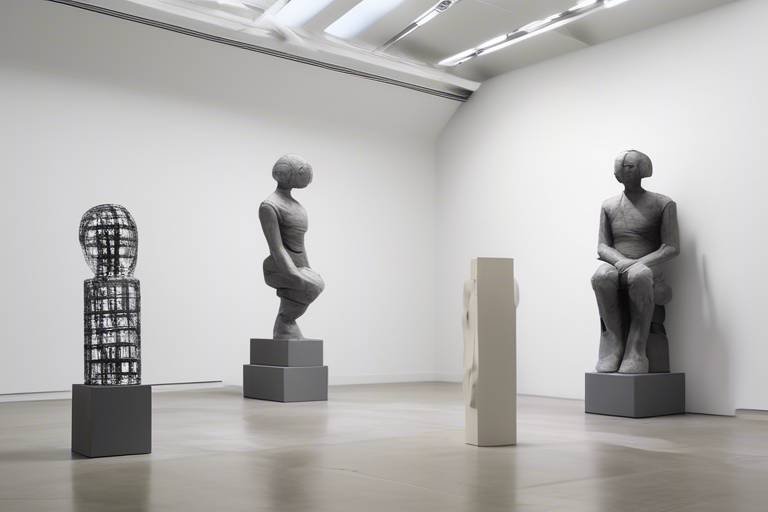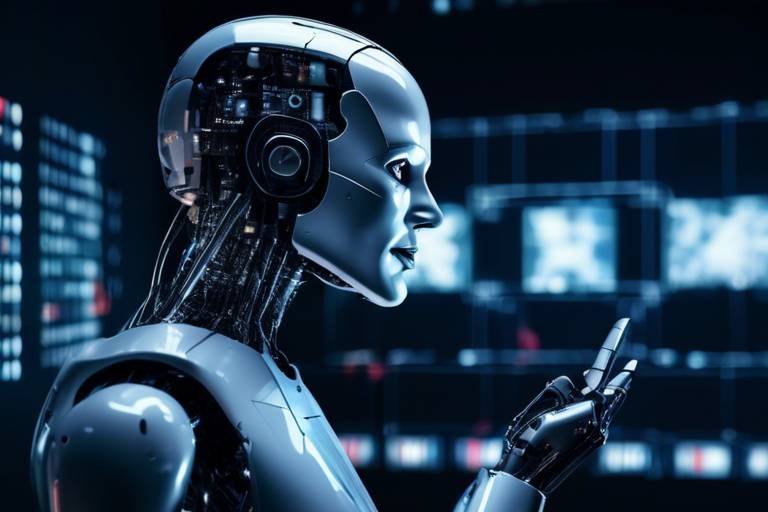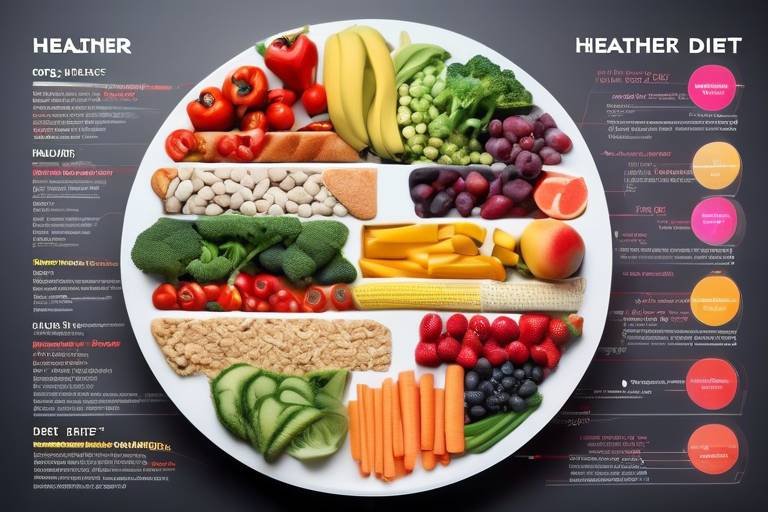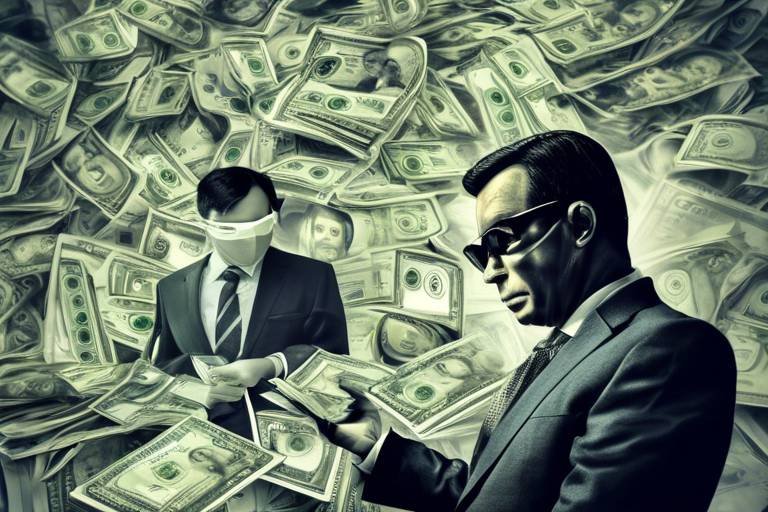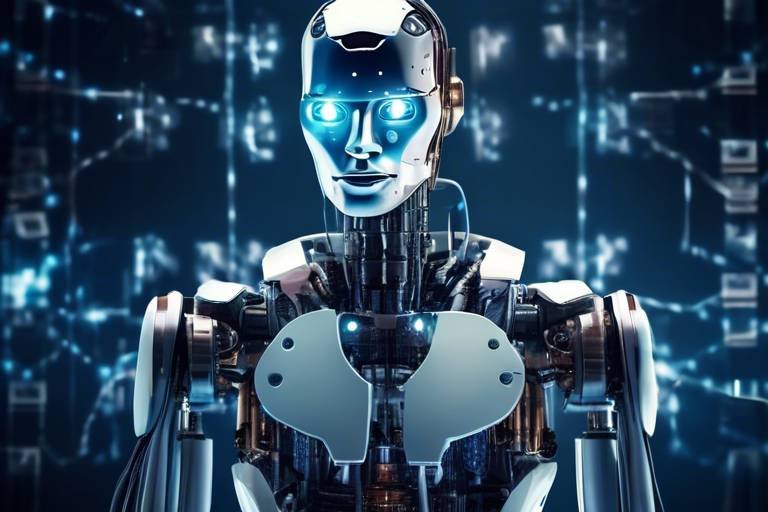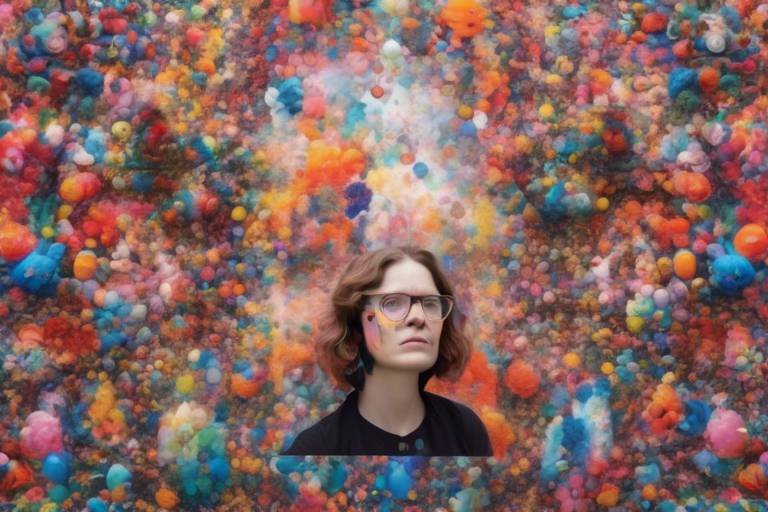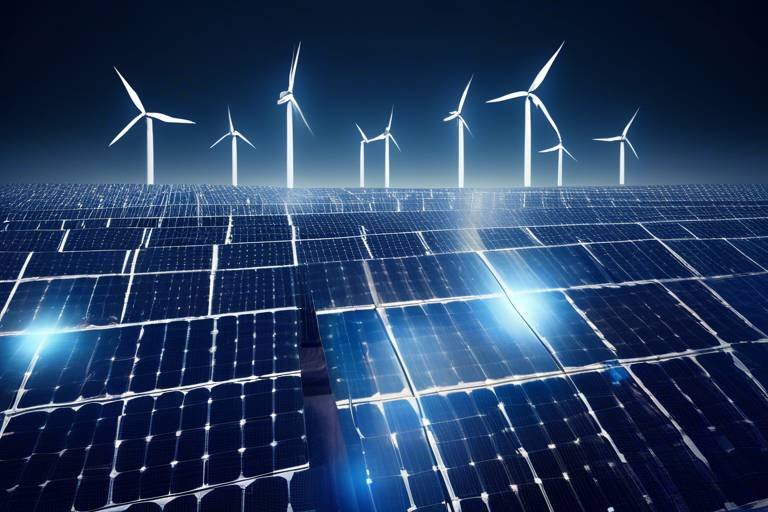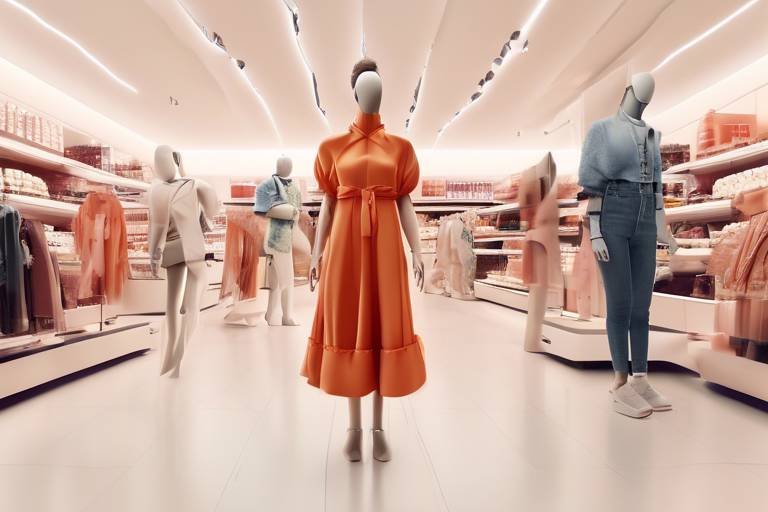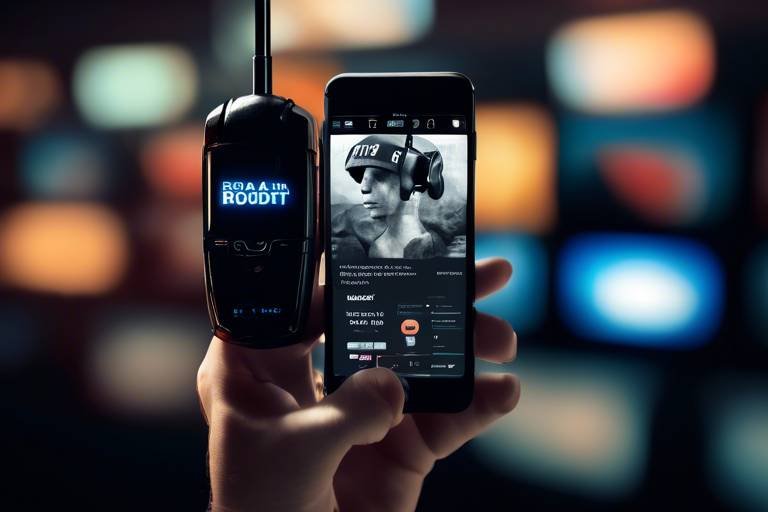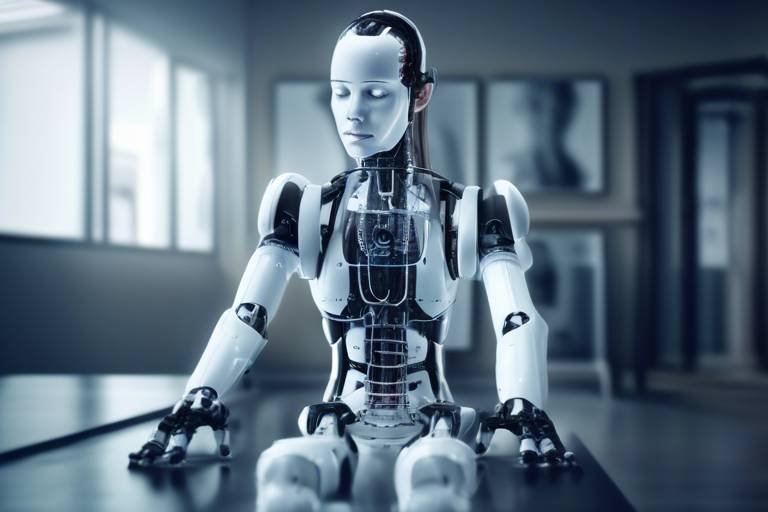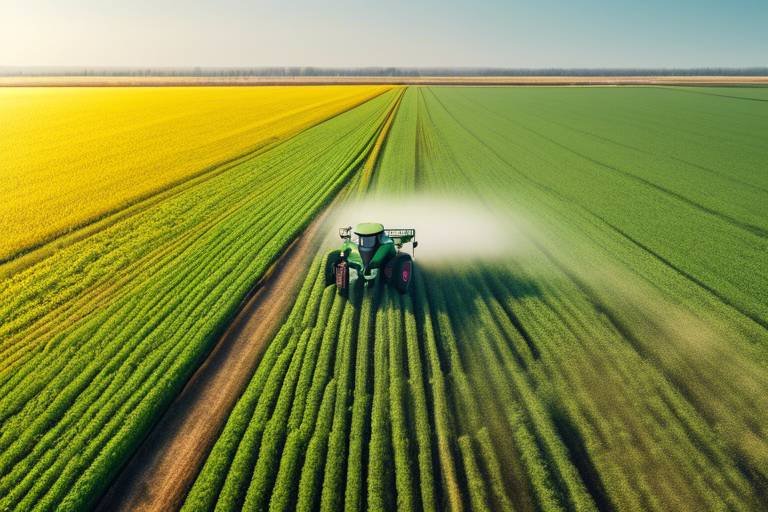AI and Its Role in Modern Sculpture
In recent years, the world of sculpture has undergone a remarkable transformation, thanks to the advent of artificial intelligence (AI). This technology is not just a tool; it has become a collaborative partner for artists, reshaping the way sculptures are conceived, designed, and created. Imagine a sculptor standing in front of a block of marble, but instead of chiseling away with a hammer and chisel, they’re interacting with an AI system that helps them visualize their ideas in real-time. This is the new reality of sculpture, where the boundaries between human creativity and machine intelligence blur, leading to innovative forms of artistic expression.
The integration of AI into sculpture opens up a plethora of possibilities. For instance, artists can now experiment with generative design techniques that utilize algorithms to create forms that may never have been conceived through traditional methods. This synergy between man and machine allows for an exploration of shapes and structures that challenge our understanding of what sculpture can be. Consider the way a sculptor can input parameters into an AI program and receive a multitude of design options that can be further refined. It’s akin to having a conversation with a highly skilled assistant who can suggest ideas and solutions that push the creative envelope.
Moreover, AI-driven tools are revolutionizing the sculpting process itself. Today’s sculptors have access to sophisticated software that assists in everything from initial design to physical fabrication. This means that artists can focus more on the creative aspects of their work while letting technology handle the more tedious tasks. The result? A more efficient workflow that enhances the artistic process significantly. Imagine being able to visualize a sculpture in a digital space before ever touching the material. This capability not only saves time but also reduces waste, as artists can experiment and iterate on their designs in a virtual environment.
As we delve deeper into the intersection of art and technology, it’s essential to recognize the ethical considerations that arise from using AI in sculpture. Questions of authorship and originality come to the forefront. If an AI generates a design, who owns that creation? Is it the artist, the programmer, or the AI itself? These are complex issues that challenge our traditional notions of creativity and ownership. Furthermore, there is the potential for bias in algorithmic processes, which can influence the artistic outcomes produced by AI. Artists must navigate these waters carefully, ensuring that their work remains authentic and true to their vision.
In conclusion, the role of AI in modern sculpture is multifaceted and evolving. It serves as a powerful tool that enhances artistic expression, fosters collaboration, and challenges our understanding of creativity. As artists and technologists continue to explore this dynamic relationship, we can expect to see even more groundbreaking innovations that will redefine the landscape of sculpture for years to come.
- How does AI influence the creative process in sculpture? AI influences the creative process by providing tools that allow artists to visualize and experiment with designs in ways that were previously impossible, enhancing both creativity and efficiency.
- What are generative design techniques? Generative design techniques use algorithms to create unique sculptural forms based on input parameters, allowing for the exploration of new shapes and structures.
- Who owns the rights to AI-generated sculptures? The ownership of AI-generated sculptures is a complex issue, often depending on current copyright laws and the specifics of the collaboration between the artist and the AI.
- Can traditional artists benefit from AI? Yes, traditional artists can benefit from AI by integrating new technologies into their practices, allowing them to adapt and innovate in their artistic expressions.

The Intersection of Art and Technology
In today's rapidly evolving artistic landscape, art and technology are no longer seen as separate entities. Instead, they have become intertwined, creating a vibrant tapestry of innovation and expression. This intersection is particularly evident in the field of sculpture, where traditional techniques meet cutting-edge technology. Imagine walking through a gallery filled with sculptures that not only challenge the limits of creativity but also invite you to ponder the role of machines in the artistic process. This is the reality we are beginning to embrace.
At the heart of this transformation is artificial intelligence. AI acts as a bridge, connecting the time-honored methods of sculpting with modern technological advancements. Artists today are not just sculptors; they are also technologists, leveraging advanced tools to expand their creative horizons. With AI, artists can explore new forms, experiment with materials, and push boundaries that were previously unimaginable. Think of it as having a co-artist who never tires and can generate endless possibilities based on your input.
Moreover, the relationship between artists and technology is evolving into a collaborative synergy. Instead of viewing AI as a threat to creativity, many artists are embracing it as a powerful tool that enhances their artistic vision. For instance, through generative design, sculptors can use algorithms to create unique forms that challenge traditional aesthetics. This is akin to having a conversation with a friend who inspires you to think outside the box, leading to unexpected and delightful outcomes.
However, this intersection is not without its challenges. As artists navigate this new terrain, they must also consider the implications of their work in a digital age. Questions about authenticity, authorship, and the emotional connection between the artist and their creation arise. Are we losing the human touch in art? Or are we simply redefining what it means to be an artist in the 21st century? These are the questions that fuel discussions in galleries and studios worldwide.
In summary, the intersection of art and technology offers a promising landscape for sculptors willing to embrace change. It encourages a dynamic dialogue between the past and the future, allowing artists to reimagine their practice and explore new dimensions of creativity. As we move forward, the collaboration between human intuition and artificial intelligence will undoubtedly shape the future of sculpture, leading to a rich and diverse artistic expression that captivates and challenges audiences.
- How is AI changing the way artists create sculptures?
AI provides tools that help artists explore new forms and materials, pushing the boundaries of traditional sculpting techniques. - Are AI-generated sculptures considered real art?
Many argue that art is defined by the intent and creativity behind it, regardless of whether it is produced by a human or an AI. - What ethical concerns arise from using AI in art?
Issues of authorship, originality, and potential biases in algorithmic processes are key ethical considerations. - Can traditional artists benefit from AI?
Absolutely! AI can offer traditional artists new tools and methods to enhance their artistic practice and reach broader audiences.

AI-Driven Sculpting Tools
In the ever-evolving world of art, are reshaping how artists approach their craft. Imagine a sculptor standing in front of a block of marble, but instead of chiseling away manually, they have an intelligent assistant that can suggest modifications, visualize complex designs, and even help fabricate their vision. This is the reality that AI brings to the table, merging creativity with technology in a way that was once unimaginable.
One of the most exciting aspects of these tools is their ability to enhance the artistic process significantly. For instance, software such as Blender and ZBrush have integrated AI features that allow artists to create intricate models with ease. These tools provide artists with the ability to manipulate shapes and forms in real-time, offering suggestions based on the artist's style and preferences. It’s like having a collaborative partner that understands your artistic voice while pushing you to explore new dimensions.
Moreover, AI is not just limited to digital sculpting. It extends into the realm of physical fabrication as well. With the integration of AI in 3D printing, artists can prototype their designs rapidly, allowing for a more iterative and experimental approach. This means that what once took weeks or months to create can now be realized in a matter of days. As a result, artists can focus more on the creative aspects rather than getting bogged down by technical limitations.
To illustrate the impact of AI on sculpting tools, consider a few key applications:
| Tool/Software | Functionality | Benefits |
|---|---|---|
| Blender | 3D modeling and animation | Real-time rendering and customizable features |
| ZBrush | Digital sculpting | High-resolution details and organic modeling |
| Fusion 360 | CAD and CAM software | Integrated design and manufacturing processes |
| AI Sculpting Tools | Generative design and algorithmic modeling | Innovative forms and structures |
As we delve deeper into these AI-driven sculpting tools, it's essential to recognize how they facilitate a new kind of artistic expression. Artists can now engage in generative design techniques, where algorithms help produce unique sculptural forms. This allows for exploration beyond conventional methods, pushing the boundaries of what sculpture can represent in our digital age.
In conclusion, AI-driven sculpting tools are not merely enhancing the artistic process; they are transforming it entirely. By providing artists with advanced capabilities and new ways to express their creativity, these tools are opening doors to a future where art and technology coexist harmoniously. As we continue to explore this intersection, the possibilities for innovation in sculpture are truly limitless.

Generative Design Techniques
Generative design is not just a buzzword; it’s a revolutionary approach that’s shaking up the world of sculpture. Imagine an artist standing at the intersection of creativity and technology, where algorithms dance at their fingertips, producing forms that are not only unique but also previously unimaginable. This technique allows artists to input specific parameters—like materials, size, and functional requirements—and then watch as the AI generates a multitude of design options. It’s akin to having a creative partner that never tires, constantly proposing new ideas that can inspire and ignite the artist's vision.
One of the most exciting aspects of generative design is its ability to explore complex geometries and structures. Traditional sculpting methods often limit an artist’s ability to experiment with intricate designs, but with AI, the possibilities are virtually endless. For instance, an artist might specify a desire for a sculpture that mimics organic forms found in nature. The generative design software can analyze these parameters and produce an array of sculptural options that reflect those natural inspirations, often leading to stunning and unexpected results.
To put this into perspective, consider some of the remarkable benefits that generative design brings to the table:
- Enhanced Creativity: By offloading the heavy lifting of design exploration to AI, artists can focus more on refining their concepts and less on the initial creation process.
- Rapid Prototyping: Artists can quickly iterate through multiple designs, allowing for faster experimentation and development of ideas.
- Complex Structures: Generative design can create forms that are difficult or even impossible to achieve through traditional sculpting techniques, opening new avenues for artistic expression.
This collaboration between human creativity and machine intelligence is not just a trend; it’s a paradigm shift in how we think about art and sculpture. Artists are now able to push the boundaries of their craft, exploring new materials and forms that challenge our perceptions of what sculpture can be. Imagine a sculpture that evolves based on environmental data, changing its shape or texture in response to the surrounding atmosphere. Generative design makes this possible, creating a living piece of art that interacts with its environment in real time.
As we embrace these innovative techniques, it’s essential to recognize that generative design doesn’t replace the artist; rather, it enhances their capabilities. The artist remains at the helm, guiding the process and making critical decisions about the final output. This synergy between human intuition and computational power is where the magic happens, leading to artworks that are not only visually captivating but also conceptually profound.
In conclusion, generative design techniques are reshaping the landscape of sculpture, offering artists new tools to express their visions. As we continue to explore this exciting frontier, one thing is clear: the future of sculpture is as limitless as the imagination itself.
Q1: What is generative design in sculpture?
Generative design in sculpture refers to the use of algorithms and AI tools to create unique sculptural forms based on specific parameters set by the artist. It allows for rapid exploration of design options and the creation of complex structures that might not be achievable through traditional methods.
Q2: How does generative design enhance creativity?
By automating the design exploration process, generative design allows artists to focus on refining their concepts rather than getting bogged down in the initial creation. This leads to more time spent on the creative aspects of their work.
Q3: Can generative design replace traditional sculpting techniques?
No, generative design does not replace traditional sculpting techniques but rather complements them. Artists still play a crucial role in guiding the process and making final decisions about their artworks.
Q4: What are the benefits of using generative design?
Some benefits include enhanced creativity, rapid prototyping, and the ability to create complex structures that push the boundaries of traditional sculpture.

Algorithmic Artistry
In the ever-evolving world of sculpture, is carving out a niche that blends creativity with cutting-edge technology. Imagine a sculptor who, instead of relying solely on their hands and intuition, also has a powerful algorithm at their disposal. This partnership opens the door to an entirely new realm of possibilities, where the lines between human creativity and machine intelligence blur. Artists are now using algorithms not just as tools, but as collaborators, pushing the boundaries of what sculpture can be.
So, how does this work in practice? Artists input parameters into an algorithm, which then generates a variety of unique designs based on those criteria. This process is akin to planting a seed and watching it grow into a complex tree with branches that extend in unexpected directions. The artist can then select, modify, and refine these generated forms, leading to sculptures that may have never been conceived through traditional methods alone. It's like having a creative partner that can churn out thousands of ideas in the blink of an eye, allowing the artist to focus on the nuances of expression and emotion.
One of the most exciting aspects of algorithmic artistry is its ability to create intricate and complex designs that challenge our perceptions of form and structure. For instance, consider the following table that highlights some key benefits of algorithmic artistry in sculpture:
| Benefit | Description |
|---|---|
| Innovative Designs | Algorithms can produce forms that are otherwise impossible to create manually, leading to groundbreaking artistic expressions. |
| Efficiency | Artists can generate multiple iterations of a design in a fraction of the time it would take to sketch them out by hand. |
| Customization | Algorithms allow for personalized designs based on specific parameters set by the artist, ensuring each piece is unique. |
Moreover, the role of algorithms in sculpture is not just about generating shapes; it's also about enhancing the artist's vision. By utilizing machine learning techniques, artists can train algorithms to understand their style and preferences, creating a feedback loop that continuously refines the output. This interaction resembles a dance, where both the artist and the algorithm respond to each other's movements, resulting in a harmonious blend of human emotion and computational precision.
However, this fusion of art and technology does raise some questions. As artists embrace algorithmic tools, they must also grapple with the implications of their work. What does it mean for creativity when a machine can generate art? Are we at risk of losing the 'human touch' that has defined sculpture for centuries? These questions are crucial as we navigate this new landscape, but they also highlight the exciting potential for collaboration between human ingenuity and artificial intelligence.
In conclusion, algorithmic artistry is not just a trend; it's a profound shift in how we perceive and create sculpture. As artists continue to explore this intersection of technology and creativity, we can expect to see a wave of innovative works that challenge our understanding of art itself. The future of sculpture is not just in the hands of the artist but also in the algorithms that assist them, shaping a new era of artistic expression.
- What is algorithmic artistry? - Algorithmic artistry refers to the use of algorithms to generate or influence artistic designs, allowing for unique and complex forms in sculpture.
- How do artists collaborate with algorithms? - Artists input specific parameters into algorithms, which then generate multiple design options that the artist can refine and modify.
- Are there ethical concerns with algorithmic artistry? - Yes, issues such as authorship, originality, and the potential for bias in algorithmic processes are significant considerations.

3D Printing Innovations
3D printing has emerged as a groundbreaking innovation in the world of sculpture, merging the realms of technology and artistry in ways that were once unimaginable. Imagine being able to take a digital design and bring it to life in a matter of hours, rather than weeks or months. This technology not only enhances the speed of creation but also allows artists to experiment with complex shapes and materials that traditional methods simply cannot achieve. With the help of artificial intelligence, sculptors can now create intricate designs that push the boundaries of their imagination.
One of the most exciting aspects of 3D printing in sculpture is the ability to create customized pieces tailored to specific visions. Artists can utilize software to design their sculptures, and then, with a few clicks, send those designs to a 3D printer. This process enables artists to focus on their creative expression rather than getting bogged down by the technicalities of material manipulation. Furthermore, the precision of 3D printing means that every detail of the artist's vision can be realized with stunning accuracy.
Moreover, the integration of AI in 3D printing technology allows for rapid prototyping. This means artists can create multiple iterations of a sculpture quickly, testing and refining their ideas in real-time. By using AI algorithms, sculptors can simulate the physical properties of different materials, enabling them to understand how their designs will behave before they even hit the print button. This capability is akin to having a virtual workshop at their fingertips, where they can experiment with various forms and structures without the constraints of physical materials.
To illustrate the impact of 3D printing innovations, consider the following table that outlines some of the key benefits:
| Benefit | Description |
|---|---|
| Speed | Rapid production of sculptures, reducing the time from concept to completion. |
| Complexity | Ability to create intricate designs that are difficult or impossible to achieve by hand. |
| Customization | Artists can easily modify designs to meet specific artistic visions or client requests. |
| Material Variety | Use of diverse materials, including plastics, metals, and even biodegradable options. |
As we delve deeper into the world of 3D printing in sculpture, it's essential to recognize that this technology is not merely a tool; it represents a revolutionary shift in how art is created and perceived. Artists are no longer confined to the limitations of traditional sculpting techniques. Instead, they are empowered by technology to explore new dimensions of creativity. The collaboration between artists and machines is fostering a new era of artistic expression, where the only limit is the artist's imagination.
In summary, 3D printing innovations are transforming the landscape of sculpture, providing artists with unprecedented opportunities to create, experiment, and innovate. As we continue to embrace these advancements, the future of sculpture looks bright, filled with endless possibilities that combine the best of both worlds: art and technology.
- What is 3D printing in sculpture? 3D printing in sculpture refers to the use of additive manufacturing technology to create three-dimensional artworks from digital designs.
- How does AI enhance 3D printing? AI enhances 3D printing by enabling rapid prototyping, simulating material properties, and assisting in design optimization.
- What materials can be used in 3D printing sculptures? A variety of materials can be used, including plastics, metals, ceramics, and even biodegradable options.
- Are there any downsides to using 3D printing in sculpture? While there are many benefits, some artists may feel that 3D printing lacks the tactile experience of traditional sculpting methods.

Collaboration Between Artists and AI
In recent years, the collaboration between artists and artificial intelligence has emerged as a fascinating frontier in the world of sculpture. This partnership is not merely a tool-and-user relationship; rather, it is a dynamic interplay where both parties contribute creatively to the artistic process. Imagine a sculptor standing before a digital canvas, armed with algorithms and AI-driven insights, ready to embark on a journey of discovery. This scenario is becoming increasingly common, as artists leverage AI to push the boundaries of their creativity.
One of the most exciting aspects of this collaboration is the ability of AI to analyze vast datasets and generate novel ideas that inspire artists. For instance, AI can sift through thousands of existing sculptures, identifying patterns, styles, and techniques that might go unnoticed by human eyes. This wealth of information can then serve as a springboard for artists, helping them to explore new directions in their work. It’s like having a creative partner who never runs out of ideas!
Moreover, the process of collaboration can take many forms. Some artists choose to work alongside AI systems, using them to generate initial concepts or refine their designs. Others might allow AI to take the lead in creating intricate patterns or structures, which the artist then interprets and finalizes. This can result in a unique blend of human intuition and machine precision, creating sculptures that are not only visually stunning but also conceptually rich.
For example, consider a project where an artist collaborates with an AI program designed to generate sculptural forms based on environmental data. The AI could analyze factors such as climate, geography, and even cultural influences to propose designs that resonate with the local context. The artist then takes these AI-generated concepts and infuses them with their personal touch, resulting in a sculpture that speaks to both the natural world and human experience.
However, this collaboration isn't without its challenges. Questions about authorship and the role of the artist in the creative process arise frequently. Who is the true creator of a piece that is generated through a partnership between human and machine? Is it the artist who provides the initial concept and emotional depth, or is it the AI that produces the intricate designs? These questions invite a rich dialogue about the nature of creativity in the age of technology.
To illustrate the impact of these collaborations, consider the following table showcasing notable projects that exemplify the fusion of art and AI:
| Project Name | Artist(s) | AI Tool Used | Description |
|---|---|---|---|
| DeepDream Sculpture | Refik Anadol | Google's DeepDream | A series of sculptures inspired by neural networks that visualize dream-like patterns. |
| AI-Generated Garden | Agnes Meyer-Brandis | OpenAI's DALL-E | A sculpture garden created based on AI-generated images of plants and landscapes. |
| Algorithmic Art | Casey Reas | Custom Algorithms | A collection of sculptures that evolve based on algorithmic processes reflecting natural patterns. |
As we continue to explore the potential of AI in the realm of sculpture, it is clear that the collaboration between artists and technology is not just a trend; it is a revolution in the making. This partnership opens up a world of possibilities, encouraging artists to experiment, innovate, and redefine what sculpture can be. It prompts us to ask ourselves: how far can we go when we combine human creativity with the analytical power of AI? The answer is still unfolding, and it promises to be as exciting as it is unpredictable.
- What is AI's role in modern sculpture? AI serves as a collaborative partner for artists, helping to generate ideas, refine designs, and create intricate forms.
- Can AI create sculptures on its own? While AI can generate designs, human artists typically provide the emotional depth and final touches that bring a sculpture to life.
- What are the ethical implications of AI in art? Questions of authorship, originality, and copyright arise, as the lines between human and machine creativity blur.
- How can traditional artists adapt to AI? Traditional artists can embrace AI as a tool for inspiration and innovation, finding ways to integrate technology into their practices.

Ethical Considerations in AI Art
The advent of artificial intelligence in the realm of sculpture brings forth a plethora of ethical considerations that artists, critics, and audiences must grapple with. As we embrace this technological revolution, questions about authorship, originality, and the inherent biases in algorithmic processes become increasingly important. How do we define the role of the artist when machines are capable of generating art? This dilemma is not merely theoretical; it has real implications for the art community and society at large.
One of the primary concerns is the issue of ownership and copyright. When an AI system creates a piece of art, who holds the rights to that work? Is it the programmer who designed the algorithm, the artist who directed the AI, or the AI itself? Current copyright laws are often ill-equipped to address these questions, leading to potential legal disputes and confusion. This ambiguity can stifle creativity and innovation, as artists may hesitate to collaborate with AI out of fear of losing their rights.
Moreover, the use of AI in art raises questions about originality. If an AI generates a sculpture based on existing styles or patterns, can it truly be considered original? Or is it merely a reflection of the data it was trained on? This leads to a broader discussion about the nature of creativity itself. Are artists merely remixing existing ideas, or do they bring something uniquely human to their work? The line between inspiration and imitation blurs when machines are involved, complicating our understanding of what it means to create.
Another critical aspect to consider is the potential for bias in AI algorithms. Since these systems are trained on data sets that may reflect societal biases, the art they produce can inadvertently perpetuate stereotypes or exclude certain perspectives. For instance, if an AI is trained predominantly on Western art, it may struggle to generate works that represent diverse cultural backgrounds. This raises ethical concerns about representation and inclusivity in the art world. Artists must be vigilant in questioning the data that informs their AI tools, ensuring that they are not unintentionally reinforcing harmful biases.
As we navigate these ethical waters, it’s essential to foster a dialogue among artists, technologists, and ethicists. By discussing these issues openly, we can work towards establishing guidelines and frameworks that protect the rights of artists while encouraging innovation. It’s a balancing act, akin to walking a tightrope between embracing the future and honoring the past. The relationship between art and technology is evolving, and with it comes the responsibility to ensure that this evolution is equitable and just.
- What are the main ethical concerns regarding AI in sculpture?
The primary concerns include authorship, originality, and bias in algorithmic processes. - Who owns the rights to AI-generated art?
Ownership can be complex, often involving the programmer, the artist, and sometimes the AI itself. - How does AI impact traditional artists?
AI presents both challenges and opportunities, pushing traditional artists to adapt and innovate.

Ownership and Copyright Issues
The advent of AI in sculpture has sparked a heated debate regarding ownership and copyright issues. As artists increasingly collaborate with artificial intelligence, questions arise about who truly owns the artwork created in this partnership. Is it the artist who provided the initial concept, the AI that generated the design, or a combination of both? This ambiguity can lead to significant legal and ethical dilemmas.
Current copyright laws were primarily designed for traditional forms of art, and they often struggle to keep pace with the rapid evolution of technology. In many jurisdictions, copyright protection is granted to works created by human authors. However, when an AI system generates a piece of art independently or collaborates with a human artist, the situation becomes murky. For instance, if an AI generates a sculpture based on algorithms without direct human input, does it qualify for copyright protection? And if so, who holds the rights to that work?
To further complicate matters, the nature of AI itself raises questions about originality. Traditional copyright laws emphasize the importance of human creativity and originality, but AI operates differently. It analyzes vast datasets and learns patterns to generate new works, which may not fit neatly into existing definitions of creativity. This leads to a scenario where the lines between inspiration and imitation blur, making it challenging to determine the originality of AI-generated art.
In an effort to address these issues, some experts advocate for the development of new legal frameworks that specifically cater to AI-generated works. These frameworks could potentially define the rights of human artists in collaboration with AI and establish guidelines for ownership and copyright. For instance, a proposed model might include:
- Joint ownership rights for both the artist and AI creator.
- Clear guidelines on how to attribute authorship in collaborative works.
- Regulations to ensure that AI systems do not perpetuate biases present in their training data, which could affect the originality of the output.
As the art world continues to embrace AI, it is essential for artists, legal experts, and policymakers to engage in ongoing discussions about these ownership and copyright issues. By doing so, they can help create a more equitable framework that recognizes the contributions of both human artists and AI technologies. This conversation is not just about protecting rights; it's about fostering an environment where creativity can thrive in the digital age.
- Who owns the rights to AI-generated artwork? Ownership is often shared between the artist and the AI, but this varies based on jurisdiction and specific agreements.
- Can AI be considered an author under copyright law? Currently, most laws only recognize human authors, but this is an evolving area of legal interpretation.
- What should artists do to protect their rights when working with AI? Artists should consider legal agreements that outline ownership and rights before beginning collaborative projects with AI.

Impact on Traditional Artists
The emergence of artificial intelligence in the world of sculpture has undoubtedly stirred the pot for traditional artists. Imagine waking up one day to find that your trusted chisel and hammer are being challenged by algorithms and 3D printers. While this may sound like a plot twist from a sci-fi movie, it’s the reality many sculptors are now facing. The intersection of creativity and technology is not just a passing trend; it’s a transformative force that is reshaping the landscape of artistic expression.
On one hand, traditional artists might feel threatened by the rise of AI-driven tools and techniques. The fear of being replaced by machines looms large, leading to questions about the future of their craft. However, it’s essential to view this evolution as an opportunity rather than a hindrance. Just like the invention of the camera did not eliminate painting but instead led to new forms of artistic expression, AI can coexist with traditional sculpting methods, enhancing rather than detracting from the creative process.
For many artists, embracing AI means expanding their toolkit. Imagine having a partner that can analyze vast amounts of data to suggest innovative designs or help visualize complex structures. This collaboration can lead to unprecedented creativity. Artists can now experiment with forms that were previously unimaginable, pushing the boundaries of their craft. The fusion of traditional techniques with modern technology can result in a new genre of sculpture that honors the past while boldly stepping into the future.
Moreover, the integration of AI can also democratize the art-making process. Artists who may not have had access to advanced tools or technical training can leverage AI to bring their visions to life. This opens up new avenues for creativity and allows for a more diverse range of voices in the art world. Traditional artists can find themselves collaborating with technologists and programmers, leading to exciting interdisciplinary projects that combine art, science, and technology.
Despite these opportunities, it’s crucial for traditional artists to navigate this new landscape thoughtfully. They must consider how to maintain their unique artistic voice in a world where algorithms can generate stunning visuals. The essence of art lies in its emotional resonance, and artists must ensure that their work reflects their personal experiences and perspectives, even when using AI tools. This balance between technology and authenticity will be key in defining the future of sculpture.
As the art community continues to grapple with these changes, it’s essential to foster discussions around the implications of AI in sculpture. Forums, workshops, and exhibitions that showcase both traditional and AI-assisted works can serve as platforms for dialogue and collaboration. By understanding and embracing the potential of AI, traditional artists can carve out a space in this evolving landscape, ensuring that their voices remain relevant and impactful.
In conclusion, while the rise of AI presents challenges for traditional artists, it also offers a wealth of opportunities for innovation and collaboration. By adapting to these changes, artists can not only survive but thrive in a world where technology and creativity converge. The future of sculpture is not about choosing between tradition and technology; it’s about finding harmony between the two.
- Will AI replace traditional sculptors? No, AI is more of a tool that can enhance the creative process rather than replace human artists.
- How can traditional artists benefit from AI? By using AI tools, artists can explore new designs, streamline their creative process, and collaborate with technology experts.
- Is AI-generated art considered original? The originality of AI-generated art is a complex issue, often depending on the input provided by the artist.
- What are the ethical implications of using AI in art? Ethical concerns include authorship, ownership, and the potential for bias in algorithmic processes.
Frequently Asked Questions
- What is the role of AI in modern sculpture?
AI plays a transformative role in modern sculpture by providing artists with innovative tools and techniques that enhance their creative processes. It serves as a bridge between traditional sculpting methods and cutting-edge technology, allowing for new forms of artistic expression.
- How do AI-driven sculpting tools work?
AI-driven sculpting tools utilize algorithms and software to assist artists in design and modeling. These tools can generate complex shapes, improve accuracy, and even facilitate physical fabrication through technologies like 3D printing, making the artistic process more efficient and exciting.
- What are generative design techniques?
Generative design techniques involve using algorithms to create unique sculptural forms that may not be achievable through traditional methods. This approach allows artists to explore a vast array of shapes and structures, pushing the boundaries of what sculpture can represent in the digital age.
- Can AI create art independently?
While AI can generate art, it typically works best in collaboration with human artists. The creative process often involves a partnership where both the artist and the AI contribute to the final piece, blending human intuition with algorithmic precision.
- What ethical considerations arise from using AI in sculpture?
The use of AI in sculpture raises several ethical questions, including issues of authorship, originality, and potential bias in the algorithms used. Artists and stakeholders must navigate these complexities to ensure fair and responsible practices in the art community.
- How does AI impact traditional artists?
The rise of AI in sculpture presents both challenges and opportunities for traditional artists. While some may feel threatened by the technology, others can embrace it to enhance their work, adapt to new trends, and expand their creative horizons.
- Are there ownership and copyright issues with AI-generated art?
Yes, ownership and copyright issues surrounding AI-generated art are complex and still evolving. Current copyright laws may not adequately address works created in collaboration with AI, leading to ongoing discussions about who holds the rights to these innovative pieces.

